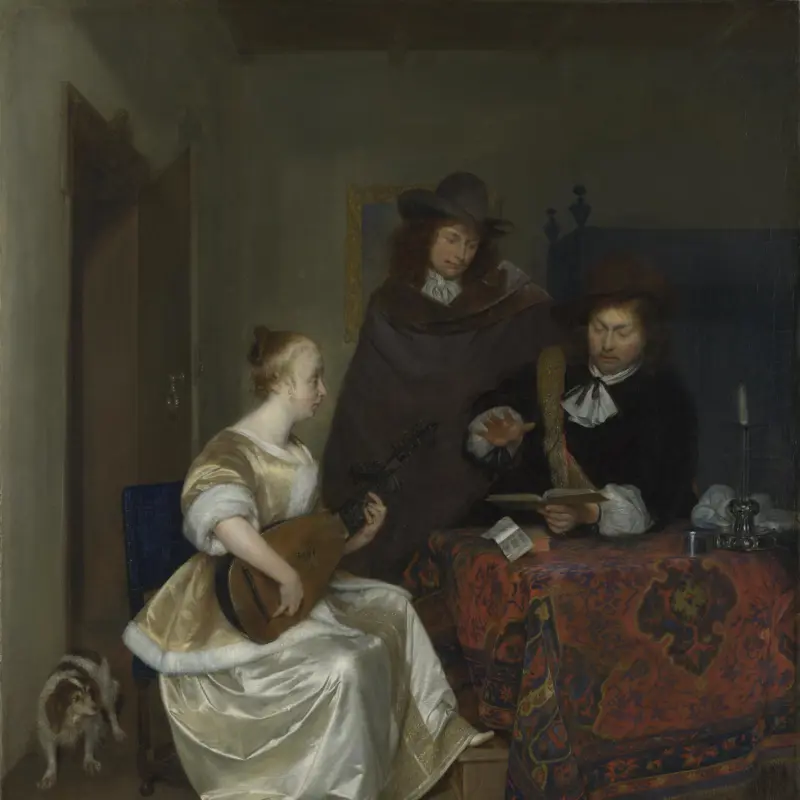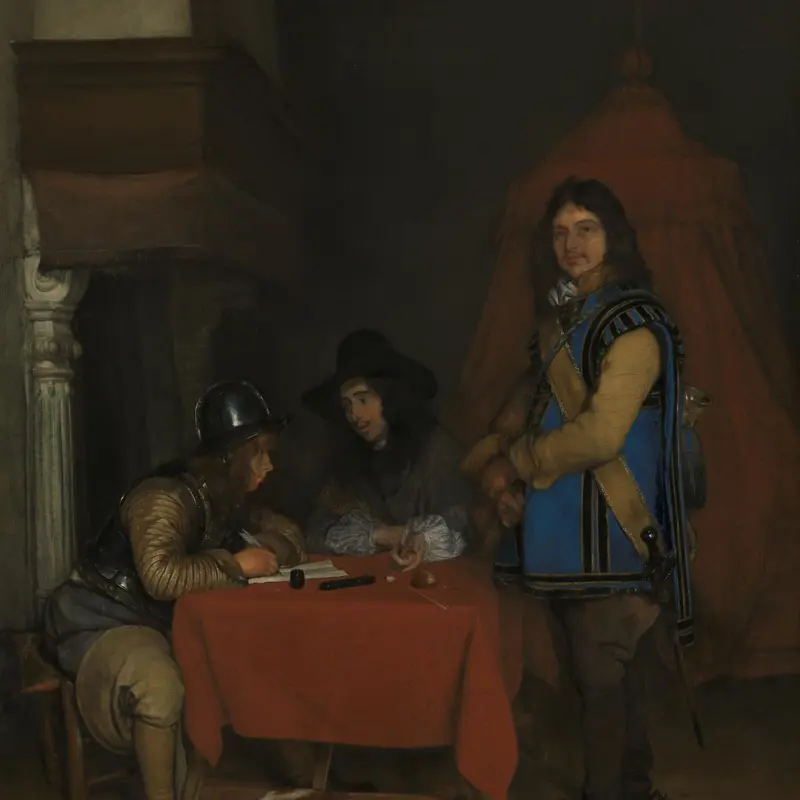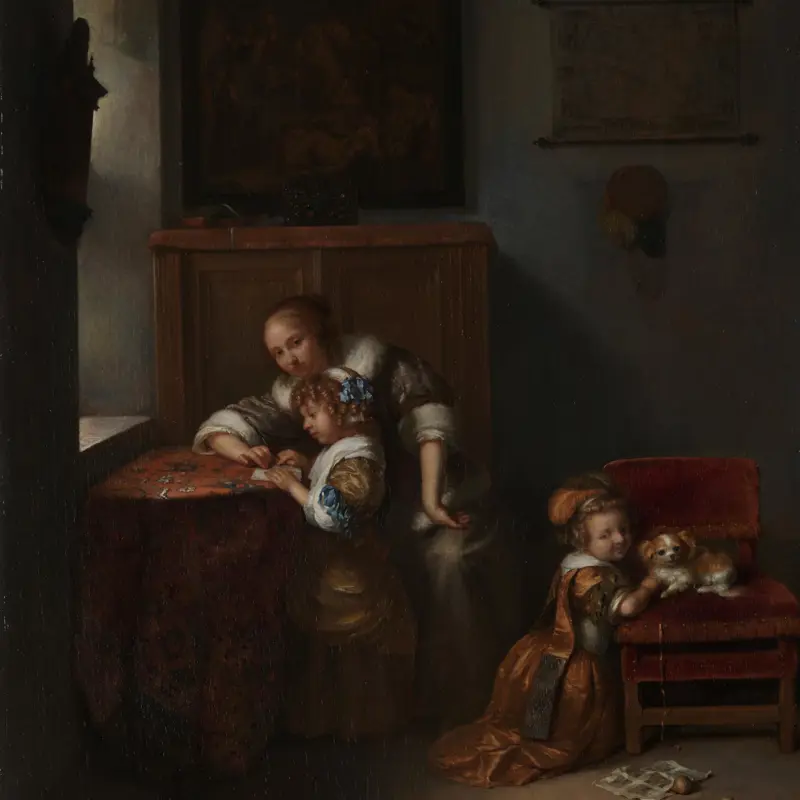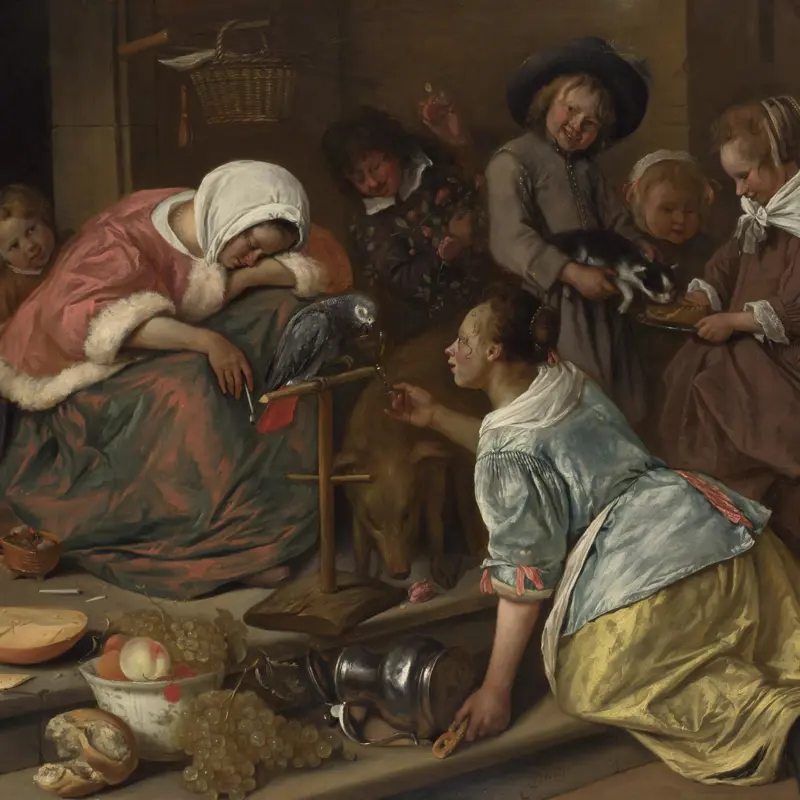Painting large scenes with many interacting figures was regarded as harder than painting still lifes, landscapes or portraits. This determined how different types of art were ranked. The highest-ranked paintings featured instructive subjects from the Bible, mythology or ancient history and were often commissioned by important patrons. However, as Church patronage decreased in the Protestant Dutch Republic, painters started creating works for the open market. They frequently specialised in modern scenes, known as genre paintings, showing everyday life. Artists like Jan Steen often included a clear moralising message, albeit with a humorous tone. Others were more subtle, showing examples of good behaviour, such as a woman learning to draw or children learning to read.
Artists were keen to demonstrate their talents. Both Jan Steen and Gerard ter Borch were, each in their own way, brilliant storytellers in paint. They also excelled at creating attractive compositions or depicting certain materials, such as the clothing and fabrics worn by people in their scenes. The picture's subject is important, but how it is depicted also matters. Often artists would choose a particular subject because it suited their artistic skills.










